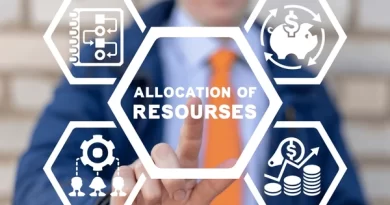Strengthening Economic Resilience: Strategies for Thriving Amid Global Uncertainty
In a world where unpredictability has become the norm, the importance of economic resilience has risen to the forefront of global discussions. The swift evolution of technology, the escalating impacts of climate change, geopolitical tensions, and unexpected disruptions like the COVID-19 pandemic have highlighted the urgent need for economies to be robust and adaptable. But what exactly does economic resilience entail, and how can nations, businesses, and individuals effectively cultivate it?
Defining Economic Resilience:
Economic resilience is the capacity of an economy to endure, adapt to, and recover from disruptions while sustaining essential functions and stability. This concept extends beyond merely rebounding from crises; it encompasses proactive measures to be better equipped for future challenges. Building resilience requires a blend of diversification, innovation, adaptability, and strategic policies that ensure an economy remains resilient even in the face of uncertainty.
Key Elements of Economic Resilience:
- Diversification Across Sectors:
A resilient economy avoids over-reliance on any single industry. Diversifying economic activities helps create a balanced and flexible economy that can absorb shocks without collapsing. Nations like Singapore and the United Arab Emirates have effectively diversified their economies by reducing dependence on oil and nurturing growth in finance, tourism, and technology sectors. - Sustainable Development Practices:
Prioritizing sustainability is critical for long-term resilience. This involves investing in renewable energy, eco-friendly infrastructure, and sustainable agriculture. Countries that commit to sustainable development are better equipped to manage environmental and economic challenges. - Embracing Innovation and Technology:
Innovation is a cornerstone of resilience in today’s rapidly changing world. Economies that prioritize research and development and embrace new technologies are better positioned to adapt to shifting circumstances. Estonia’s focus on digital innovation, for example, has transformed it into one of the world’s leading e-governments, ensuring economic stability even during crises. - Robust Social Safety Nets:
Protecting vulnerable populations during economic downturns is essential for resilience. Comprehensive social safety nets—including unemployment benefits, healthcare access, and education—help stabilize society and promote economic stability. - Flexible Policy Frameworks:
Governments play a pivotal role in fostering economic resilience. Agile and responsive policy frameworks that can quickly adapt to emerging challenges are crucial. This includes implementing fiscal and monetary policies to stabilize the economy during downturns and long-term strategies that drive growth and resilience.

Examples of Economic Resilience in Practice:
- Iceland: The 2008 financial crisis devastated Iceland’s economy, leading to the collapse of its banking sector. However, through decisive measures such as allowing banks to fail, devaluing the currency, and imposing strict capital controls, Iceland achieved a rapid recovery. Today, it serves as a model of resilience, with a focus on sustainable tourism and fisheries.
- Germany: Renowned for its economic resilience, Germany’s success is rooted in its strong manufacturing base, comprehensive social safety nets, and emphasis on vocational training. During the global financial crisis, Germany’s short-time work program (Kurzarbeit) helped prevent mass unemployment and maintained economic stability.
The Role of Businesses and Individuals:
Economic resilience isn’t solely the domain of governments; businesses and individuals play a vital role. Companies can build resilience by diversifying supply chains, investing in workforce development, and adopting flexible business models. Individuals contribute by enhancing their financial literacy, saving for emergencies, and continuously updating their skills to stay competitive in an evolving job market.
The Future of Economic Resilience:
Moving ahead, fostering economic resilience will demand collaborative efforts from governments, businesses, and individuals.The challenges of the 21st century—ranging from climate change to technological disruption—demand innovative approaches to economic stability. By focusing on sustainability, innovation, and inclusivity, we can create economies that not only withstand shocks but also flourish in an uncertain future.
FAQs:
1. What does economic resilience mean and why is it vital? Economic resilience describes an economy’s ability to endure, adjust to, and rebound from disruptions while keeping its core functions and stability intact. It’s essential because it equips economies to handle crises, maintain growth, and mitigate the long-term effects of unexpected events such as natural disasters or economic downturns.
2. What steps can a country take to enhance its economic resilience? Countries can bolster economic resilience through strategies like diversifying their economic activities, investing in sustainable practices, embracing technological advancements, strengthening social safety nets, and developing flexible policy frameworks. These measures help economies stay robust and adaptable during challenging times.
3. What is the role of businesses in promoting economic resilience? Businesses support economic resilience by diversifying their supply chains, investing in their workforce, adopting adaptable business models, and integrating sustainable practices. These actions enable businesses to respond more effectively to disruptions and contribute to overall economic stability.
4. How can individuals contribute to building economic resilience? Individuals contribute by improving their financial knowledge, saving for unexpected situations, continually enhancing their skills, and supporting sustainable practices. Such personal actions help individuals stay adaptable and financially secure, which in turn supports broader economic stability.
5. In what ways does innovation strengthen economic resilience? Innovation strengthens economic resilience by enabling economies to adapt to changing conditions, enhance efficiency, and discover new growth opportunities. Investments in research and development, digital transformation, and fostering a culture of innovation are key to maintaining economic adaptability and stability.
6. Why is it important for an economy to be diversified? Diversification is crucial as it reduces the risk of economic collapse by spreading resources and investments across various sectors. An economy less dependent on a single industry is more capable of absorbing shocks without experiencing widespread disruption, ensuring balanced and sustainable growth.
7. How do social safety nets support economic resilience? Social safety nets, including unemployment benefits, healthcare, and education access, provide critical support to individuals during economic downturns. By protecting people from severe financial hardship, these programs help stabilize the economy and maintain social stability, which is essential for long-term resilience.
8. Can you provide examples of countries that have effectively built economic resilience? Countries such as Singapore, Germany, and Iceland have showcased strong economic resilience. Singapore’s economy has diversified beyond oil, Germany’s resilience is attributed to its strong manufacturing sector and comprehensive social safety nets, and Iceland rebounded swiftly from the 2008 financial crisis through decisive economic reforms.
9. How does focusing on sustainable development enhance economic resilience? Sustainable development fosters long-term growth by addressing environmental, social, and economic factors. Investing in renewable energy, green infrastructure, and sustainable practices reduces vulnerability to environmental and resource challenges, leading to more robust and enduring economic stability.
10. What are some common challenges in building economic resilience? Building economic resilience involves navigating challenges such as balancing short-term needs with long-term stability, tackling inequality, adapting to rapid technological changes, and addressing global issues like climate change and geopolitical tensions. Effective resilience-building requires collaborative and forward-thinking approaches to overcome these obstacles.




